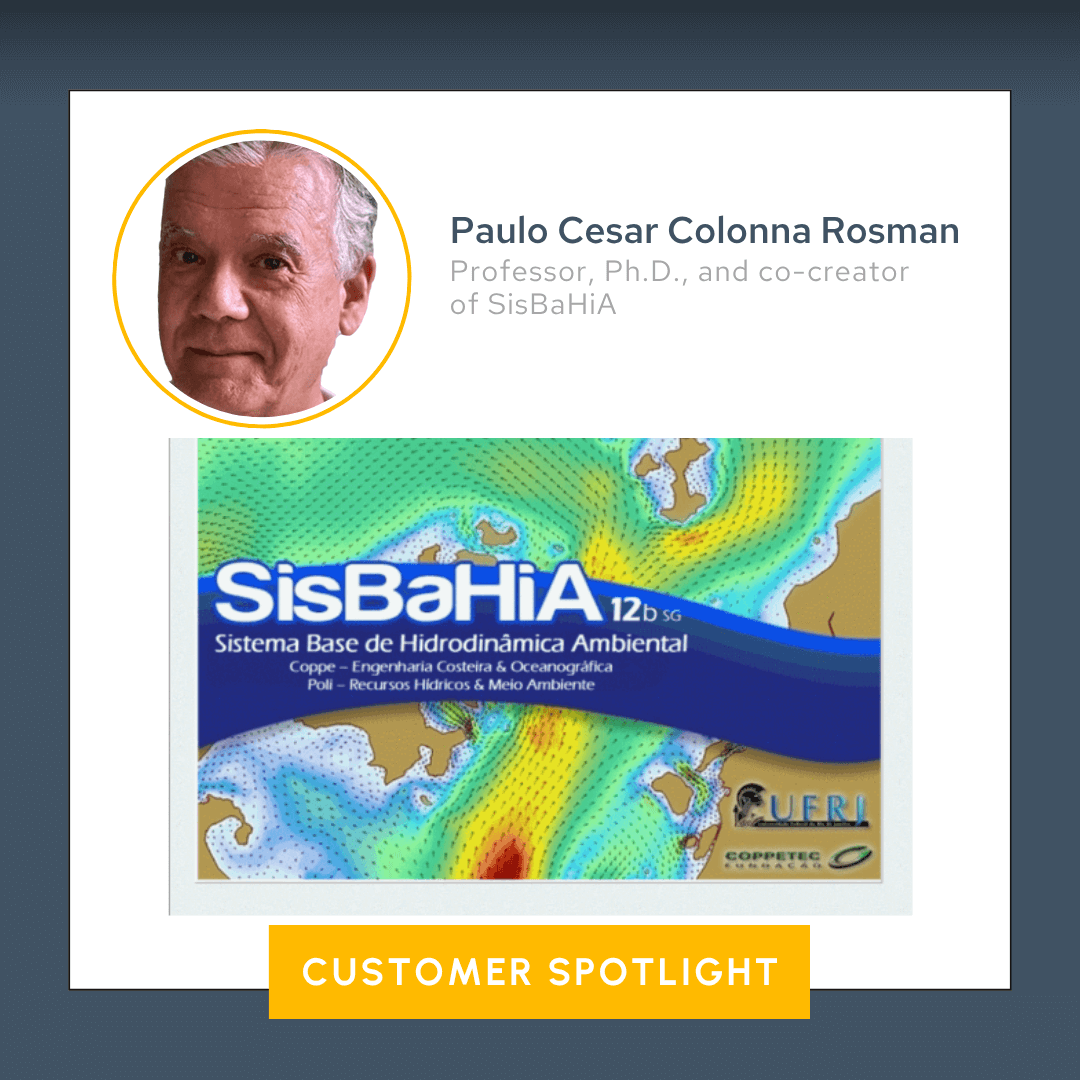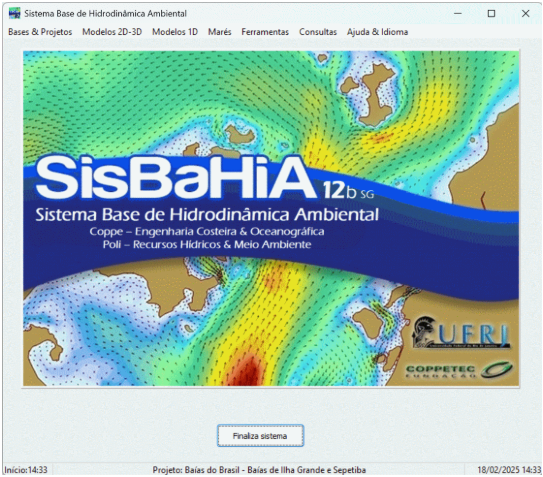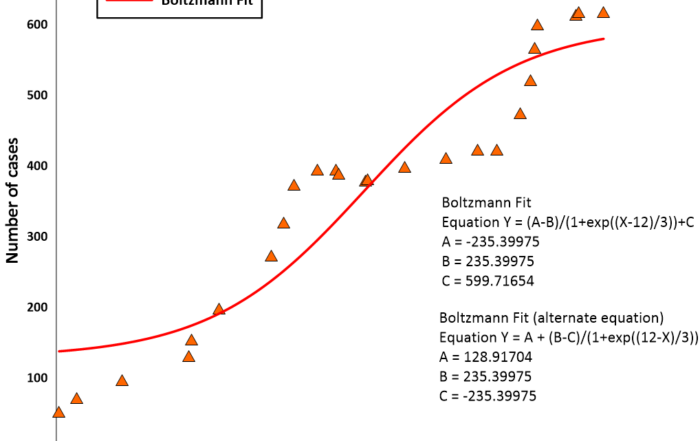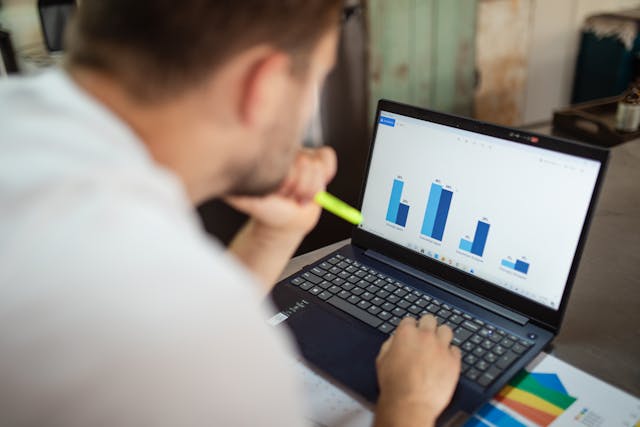Modeling Rivers, Estuaries, and Lagoons: How SisBaHiA is Transforming Water Resource Management
When it comes to understanding natural water bodies, the Sistema Base de Hidrodinâmica Ambiental (SisBaHiA), which translates to Base System for Environmental Hydrodynamics, stands out as a powerful tool. First conceptualized and developed by Professor Paulo Cesar Colonna Rosman, Ph.D. and his colleagues, the program has been continually refined through decades of research, countless master’s and doctoral theses, and ongoing collaboration with institutions and companies worldwide, making it an essential tool for water resource modeling. Today, SisBaHiA is used for hundreds of projects across Brazil and beyond, delivering detailed, data-rich models of rivers, estuaries, and coastal environments.
But what exactly makes Professor Rosman and his team’s invention such a game changer, and how do tools like Surfer and Grapher elevate SisBaHiA’s insights even further? Let’s take a look at how this groundbreaking system works and why it’s become so vital to scientists and engineers in the field.
How SisBaHiA Rose to Prominence
The story of SisBaHiA begins with a moment of both opportunity and bold thinking. In the late 1980s, Professor Rosman had just earned his doctorate in coastal engineering from MIT and was already making strides in the field of environmental hydrodynamics. His early research centered around simulating the complex interactions of natural water bodies—places where ocean tides, river flows, and salinity meet in constantly shifting patterns.
Fast forward to the late 1990s, and a major project in Brazil set the stage for SisBaHiA’s breakthrough. The state of Bahia launched an international competition to select a modeling system for managing Todos los Santos Bay—a massive estuarine system in Bahia. The winning bid came from CH2M Hill, a global environmental consulting powerhouse at the time, which partnered with a local firm in Bahia.
Initially, Professor Rosman was brought in as a translator and technical expert to help adapt CH2M Hill’s proposed American model to Portuguese and teach local agencies how to use it. But during discussions, he made a daring offer: rather than translating their model, he proposed that they use the environmental hydrodynamics model he and his team had developed at the Federal University of Rio.
“I was a little audacious,” Professor Rosman said. “I told the people from CH2M Hill, ‘Listen, the model we developed at the university is better than this one that you are proposing.’ They said, ‘Oh, is that so? We want to see it.'”
Professor Rosman and his team’s model was built to tackle the unique challenges of bays and estuaries and deliver more accurate, meaningful insights. After a demonstration of the model’s capabilities, CH2M Hill saw the potential and agreed to pivot, making Professor Rosman’s role shift dramatically—from translator to principal developer—and SisBaHiA was born.
Turning Numbers Into Narratives: How Surfer and Grapher Powered SisBaHiA’s Visual Impact
Before SisBaHiA could take center stage, Professor Rosman knew the system needed to be accessible and effective for users. Ultimately, this meant two things. First, the model needed to perform well, and the person who stepped in to achieve that goal was Patricia Rosman, Professor Rosman’s wife who’s been behind the evolutive maintenance of SisBaHiA since its first version launched in July 2000. Secondly, the model had to offer more than just advanced hydrodynamic calculations. It needed to deliver a user-friendly interface that could display the power of its results—clear visuals, maps, time series data, and dynamic insights that could be easily shared and understood.
This is where Surfer and Grapher came in. As Professor Rosman and his team at the university began to shape SisBaHiA into a tool that scientists and engineers could readily use, they recognized that Surfer and Grapher offered exactly what they needed: robust visualization tools that could be integrated into another program.
With Surfer and Grapher’s capabilities to create maps, plots, and time series graphs—while being able to operate as subroutines within a larger system—SisBaHiA found a perfect match. From then on, the two data visualization tools became an integral part of SisBaHiA’s DNA, bridging the gap between advanced hydrodynamic modeling and easily creating clear, compelling visual outputs.
A World of Possibilities: How Surfer and Grapher Bring SisBaHiA to Life
With an innovative but user-friendly modeling system ready to go, Professor Rosman and his team made SisBaHiA broadly available. Since then, it’s been helping users visualize and analyze their data so they can effectively manage water resources in Brazil and beyond.
For instance, users working on mesh and domain modeling can create detailed bathymetry maps, highlight bottom roughness, or generate colorful isoline maps that show every contour in vivid detail. And when it comes to simulating dynamic environments—like flowing water, shifting currents, or changing water quality—the program helps users dive deep. They can visualize everything from water velocity to water levels to other hydrodynamic patterns in real time. They can also see how water flows from a lagoon to the sea by mapping that journey in a way that’s both intuitive and impressive, equipping them to spot issues and share solutions with ease.
“Whatever the user wants to do, they can do,” Professor Rosman explained. “Since they’re in Surfer when using SisBaHiA, there’s liberty for them to manipulate the map the way they want, so it’s really, really effective.”
SisBaHiA also gives users the power to explore time-series data in rich, interactive ways. For example, if they want to take the readings from multiple monitoring stations and turn them into detailed graphs that show how dissolved oxygen, nutrients, or salinity levels change over time, the Grapher integration in SisBaHia won’t just plot the number—it’ll open up a whole world of statistical analysis, trend line modeling, and post-processing, helping users uncover trends and make smarter decisions.
“Grapher offers a ton of post-processing options,” Professor Rosman said. “It’s very, very powerful, not only because you can put the result you want in a time series, but you can use the whole power of Grapher to calculate statistics and trend lines and do all sorts of stuff. It’s fantastic.”
Why SisBaHiA Matters Today: A Proven Tool for Smart Decisions
Because SisBaHiA is such a powerful modeling system, it’s tackling some of the toughest environmental challenges in Brazil. One critical challenge is centered around a lagoon system in the bustling metropolitan area of Rio de Janeiro. The lagoon, like many others, faces serious environmental issues, including pollution, sediment buildup, and declining water quality. And while there’s a big push to restore it, there’s also a need to know what actions will actually make a difference. That’s where SisBaHiA has made an impact.
Recently, a sewage management company took on the enormous task of managing and cleaning up the lagoon system. They’re required to invest the equivalent of $50 to $60 million in the first year alone. But before making any decisions—like whether to dredge the canals or upgrade the sewage outflows—they turned to SisBaHiA for answers. With this modeling system, they could simulate countless scenarios and pinpoint the most effective investments. They didn’t have to rely on guesswork. Instead, they could see exactly how different interventions would impact water quality, sediment patterns, and overall environmental health—and the stakes were high.
Community members expected that a $60 million investment would magically fix the entire lagoon system, but as Professor Rosman explained to them, that’s just the start. True restoration would take more effort and potentially involve not just private companies but also public investments from the state and local municipalities.
“It’s not in the power of the sewage company to operate it alone,” Professor Rosman said frankly. “How can we demonstrate that? Well, you can demonstrate that by using the SisBaHiA. We could simulate what sort of improvements $60 million would give to the lagoon system and how much more you’d have to invest to really get things done. We simulated a number of scenarios, considering different levels of investment up to nearly $500 million. This modeling system has been used for decision-making involving this sort of investment into the lagoon system.”
Shaping the Future of Water Resource Management
From its beginnings in academic research to its role in major environmental restoration projects, SisBaHiA has proven itself as a vital tool for understanding and managing natural water bodies. With the power of Surfer and Grapher at its side, it doesn’t just generate data—it creates clear, insightful visuals that help stakeholders make informed decisions, even when millions of dollars and entire ecosystems are on the line. As environmental challenges grow more complex, Professor Rosman and his team’s innovative model will only become more important in helping users understand our planet and preserve its precious resources.
Want to stay updated on how innovative technology is transforming water resource management and beyond? Subscribe to our blog and join us in exploring how different tools, tips, and experts are shaping the world around us.




